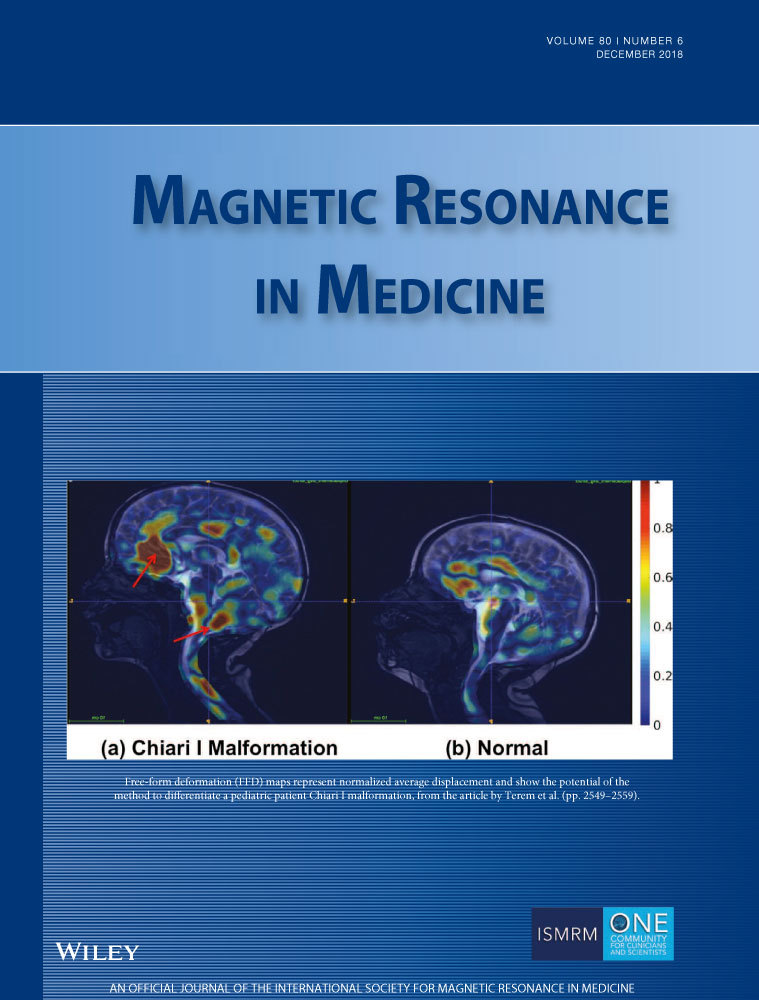In vivo bone 31P relaxation times and their implications on mineral quantification
Funding information: National Institutes of Health (NIH), Grant number R01-AR50068
Abstract
Purpose
The intersubject variations in bone phosphorus-31 (31P) T1 and
 , as well as the implications on in vivo 31P MRI-based bone mineral quantification, were investigated at 3T field strength.
, as well as the implications on in vivo 31P MRI-based bone mineral quantification, were investigated at 3T field strength.
Methods
A technique that isolates the bone signal from the composite in vivo 31P spectrum was first evaluated via simulation and experiments ex vivo and subsequently applied to measure the T1 of bone 31P collectively with a spectroscopic saturation recovery sequence in a group of healthy subjects aged 26 to 76 years.
 was derived from the bone signal linewidth. The density of bone 31P was derived for all subjects from 31P zero TE images acquired in the same scan session using the measured relaxation times. Test–retest experiments were also performed to evaluate repeatability of this in vivo MRI-based bone mineral quantification protocol.
was derived from the bone signal linewidth. The density of bone 31P was derived for all subjects from 31P zero TE images acquired in the same scan session using the measured relaxation times. Test–retest experiments were also performed to evaluate repeatability of this in vivo MRI-based bone mineral quantification protocol.
Results
The T1 obtained in vivo using the proposed spectral separation method combined with saturation recovery sequence is 38.4 ± 1.5 s for the subjects studied. Average 31P density found was 6.40 ± 0.58 mol/L (corresponding to 1072 ± 98 mg/cm3 mineral density), in good agreement with an earlier study in specimens from donors of similar age range. Neither the relaxation times (P = 0.18 for T1, P = 0.99 for
 ) nor 31P density (P = 0.55) were found to correlate with subject age. Average coefficients of variation for the repeat study were 1.5%, 2.6%, and 4.4% for bone 31P T1,
) nor 31P density (P = 0.55) were found to correlate with subject age. Average coefficients of variation for the repeat study were 1.5%, 2.6%, and 4.4% for bone 31P T1,
 , and density, respectively.
, and density, respectively.
Conclusion
Neither 31P T1 nor
 varies significantly in healthy adults across a 50-year age range, therefore obviating the need for subject-specific measurements.
varies significantly in healthy adults across a 50-year age range, therefore obviating the need for subject-specific measurements.




